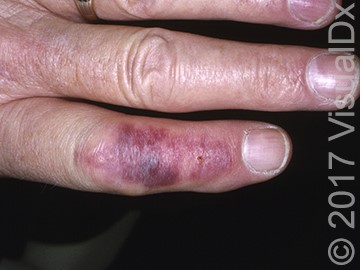Factors Influencing Provider Efficiency—or Inefficiency—in the ED Key point: Emergency department study on provider efficiency has relevance to urgent care. Citation: Bobb MR, Ahmed A, Van Heukelom P, et al. Which practices make for efficient emergency department providers? Acad Emerg Med. December 18, 2017. [Epub ahead of print] This mixed-methods study published in Academic Emergency Medicine identified five practices/behaviors that increased provider efficiency in the emergency room and two practices that did not. What makes some …
Read MoreAbstracts in Urgent Care – April 2018
ACP Eases Up on A1c Ceiling for Patients with Type 2 Diabetes Key point: The American College of Physicians suggests slightly higher hemoglobin A1c target levels for patients with type 2 diabetes. Citation: Qaseem A, Wilt TJ, Kansagara D, et al. Hemoglobin A1C targets for glycemic control with pharmacologic therapy for nonpregnant adults with type 2 diabetes mellitus: a guidance statement update from the American College of Physicians. Ann Intern Med. March 6, 2018. [Epub ahead …
Read MoreAbstracts in Urgent Care – March 2018
Confirmed Flu Ups Short-Term Risk for MI Key point: Patients with laboratory-confirmed influenza are almost six times more likely to be admitted for acute myocardial infarction (MI) in the following 7 days. Citation: Kwong JC, Schwartz KL, Campitelli MA, et al. Acute myocardial infarction after laboratory-confirmed influenza infection. N Engl J Med. 2018;378(4):345-353. Results of a cohort study published in the New England Journal of Medicine revealed that patients with laboratory-confirmed influenza were almost six …
Read MoreSlow Medicine: ‘Unprescribing’ America
#TimesUp; #NeverAgain; #Privacy; #OpioidCrisis; #BlackLivesMatter…. The last year has been a dramatic one for turning points in long-festering social issues. For decades, we turned our cultural cheek on problems we knew existed (misogyny and bias) or should have seen coming (opioids, mass killings and privacy). But in 2017 and into 2018 we are witnessing a tidal wave of resistance and public denunciations against the ugly side of American life. A collective enough is enough echoes …
Read More
A 34-Year-Old Woman with an Unidentified Insect Sting
Case The patient is a 34-year-old woman who has just returned from the first camping trip of the year with her family. She relays that 2 days earlier, as she as she was setting up a tent, she “got stung” by something she didn’t see. As she struggled to free herself of the tent fabric, she was stung several more times on her hand and arm. She never saw the culprit. Not long after, she …
Read More
Head Injuries and Cirrhosis: Does everyone need a CT Scan?
Urgent message: The decision of whether or not to image a patient with a head injury has significant implications—for the patient and the urgent care provider. Understanding which patients are at greatest risk for serious head injury, indications for testing, and options for management/disposition is essential. Brandon Godfrey, MD; Haylie Wiesner, BS; and John Shufeldt, MD, JD, MBA, FACEP Case A 47-year-old male with a history of alcohol abuse and cirrhosis presents to an urgent …
Read More
A 17-Year-Old Male with Knee Pain After a Fall
Case The patient is a 17-year-old male who presents to urgent care with anterior knee pain after a fall while mountain biking. However, he states that he’d been experiencing pain for an indeterminate period of time before the incident that preceded his visit. View the image taken (Figure 1) and consider what the diagnosis and next steps would be. Resolution of the case is described on the next page. Figure 1.
Read More
Concussion Management in Urgent Care: A Primer for Implementation
Urgent message: Sports-related concussions are particularly dangerous injuries due to their complex nature and difficulties associated with diagnostic and return-to-play decisions. Some of the most commonly employed assessment tools have been shown to be unreliable, leading to misdiagnoses. Guidelines for selecting more effective concussion assessment instruments and the use of such tests in urgent care settings are here suggested as an optimal framework for improved care. Len Lecci, PhD, MA IntroductionMillions of adults, adolescents, and …
Read More
The Effect of PECARN Guidelines on Minor Head Injury Referrals from the Urgent Care Center to the Emergency Room
Cathleen DeLaney DNP, MSN-FNP, APRN and Kris Skalsky MSNEd, EdD, RN Abstract Background and Purpose: The focus of this project was to determine if an evidence-based educational intervention had an impact on reducing the number of pediatric head injury referrals from the urgent care center to the emergency room. The urgent care center often makes referrals of pediatric head injury patients to the ED, contributing to the overutilization and overcrowding of an already taxed system. …
Read More
Cervical Facetitis—An Unusual Cause of Neck Pain
Urgent message: Though neck pain is a common complaint among patients presenting to urgent care centers, cervical facetitis is a relatively uncommon cause. Nonetheless, urgent care providers should consider it in the differential diagnosis for patients presenting with neck pain, even those who are afebrile. Mark Richman, MD, MPH; Brendan Appold, MS; and Jennie Soniega-Sherwood, MPH Case Presentation The patient is a 62-year-old-female with no significant past medical history who presented to a hospital-based urgent …
Read More